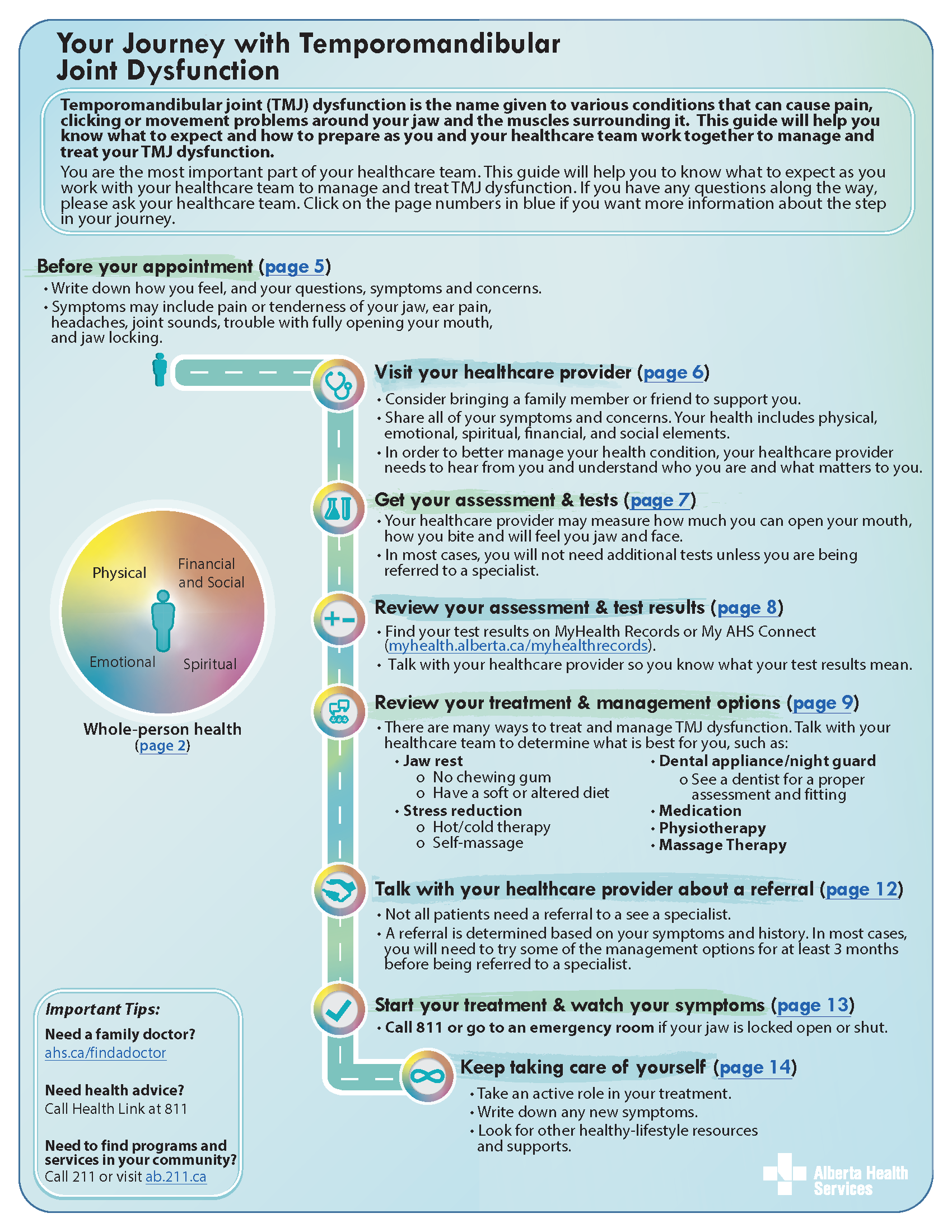When you visit your healthcare provider for temporomandibular joint (TMJ) dysfunction, they will review your history and symptoms. They may ask you about:
- whether your ability to open and close your mouth has changed
- past injuries to your head, neck, or jaw
- sore teeth
- current stress levels and life satisfaction
Using a
symptom tracker (PDF) can help you answer these questions.
Other things to tell your healthcare provider
You are the most important part of your healthcare team. Tell your healthcare provider about the impact the TMJ dysfunction is having on the things that are important to you, like your job, hobbies and interests, and relationships. Tell them what activities your TMJ dysfunction is affecting, like eating, drinking, and talking.
Making the most of your appointment
If you don't understand what your healthcare team is telling you, let them know right away. Be open and honest. You might say:
- “It sounded like you said that I should… Did I understand that correctly?"
- “Can you show me a picture or model to help me understand?"
Learn more about
working with your healthcare team and
making the most of your appointment.

Temporomandibular Joint (TMJ) Dysfunction Pathway
Download or print the
full patient pathway (PDF) and
summary (one-page PDF) to learn more about how to manage and treat TMJ dysfunction.
Patient Pathway  Summary
Summary 
